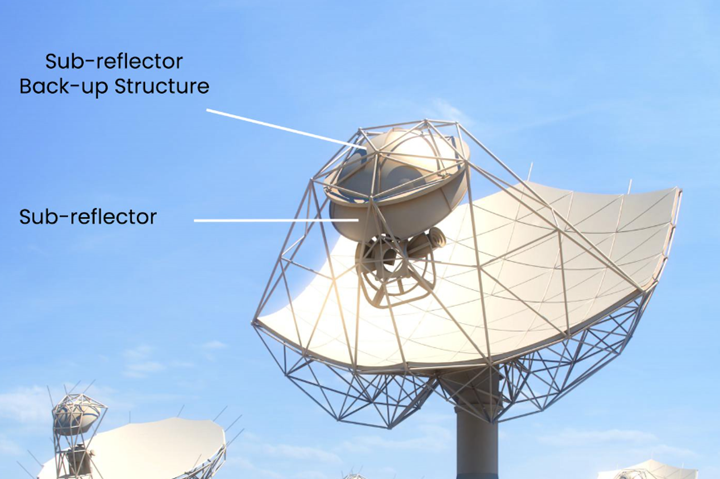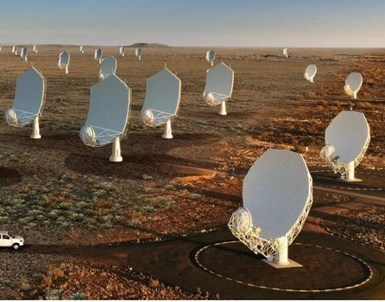Eosol Group, a global engineering and technical support company, has partnered with Compoxi, a composite structure developer, to build more than 250 4.5-metre composite sub-reflectors for the SKA Observatory’s Medium Frequency Telescope (SKA-MID). The telescope is under construction in South Africa in the largest contract ever awarded to a Spanish company.

The SKA Observatory is an intergovernmental organization composed of member states from five continents, headquartered in the United Kingdom. Its mission is to advance our understanding of cosmic science through the construction and operation of radio telescopes, particularly with respect to the formation and evolution of galaxies, fundamental physics in extreme environments, and the origin of life. The two radio telescopes, which are being built in South Africa and Australia, will consist of hundreds of dish reflectors and thousands of antennas, respectively.
The Sub-reflector is one of the key components of the telescope, which focuses the signal collected by the primary reflector to the signal receiver, thus starting the signal processing process. Each sub-reflector is 4.5 meters in diameter, made of composite materials and metallized to meet the project’s requirements for electromagnetic and mechanical properties.
The material choice for the secondary reflector is usually focused on carbon fiber composite because of its extremely high strength-to-weight ratio, rigidity and durability, which can maintain stable performance in harsh environments.

In addition, in order to ensure electromagnetic reflection performance, the surface of the secondary reflector is usually metalized, such as aluminum plating or copper plating, to improve the signal reflection efficiency. In the manufacturing process, high-precision processes such as automatic fiber laying (AFP) are used to ensure the lightweight and surface accuracy of the structure, while ensuring its stability in the face of high wind pressure and temperature changes. The SKA-Mid medium frequency telescope will have 197 dish reflectors in South Africa, while the Low Frequency Telescope in Australia (SKA-Low) will contain 131,072 antennas spread over 74 kilometers. The size of these telescopes and the large number of antennas and dish reflectors will bring significant improvements in resolution, sensitivity and observation speed, allowing astronomers to observe the universe in greater detail.
Mark Harman, project manager of the Dish Reflector for the SKA project, said: “The SKA-MID’s sub-reflector design is technically challenging, and its surface needs to be highly accurate to accurately reflect the faint astronomical signal to the detector. In addition, it must be strong enough to withstand environmental conditions.”




